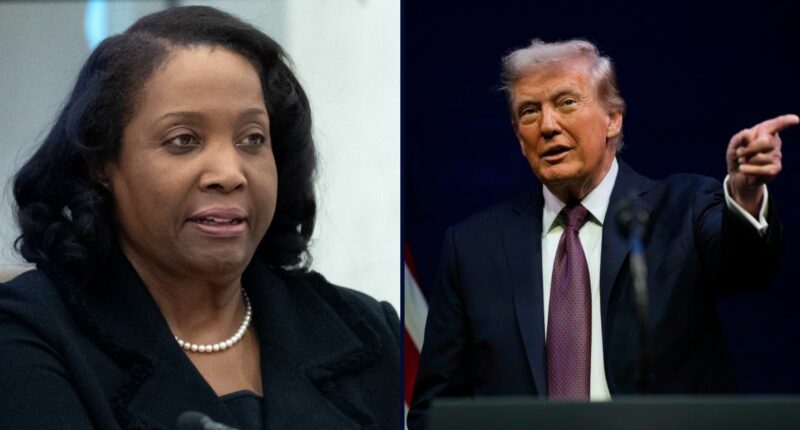Share this @internewscast.com
Left: Federal Reserve Board of Governors member Lisa Cook attends a Board of Governors open meeting at the Federal Reserve on June 25, 2025, in Washington (AP Photo/Mark Schiefelbein, File). Right: President Donald Trump addresses a hearing at the Religious Liberty Commission held at the Museum of the Bible, Monday, Sept. 8, 2025, in Washington (AP Photo/Alex Brandon).
On Wednesday, the U.S. Supreme Court delivered a succinct order notifying the administration that President Donald Trump’s effort to dismiss Federal Reserve Board governor Lisa Cook, due to a mortgage fraud criminal referral generated by his own administration, will face delays for several months.
Without providing an explanation, the Supreme Court determined that Trump’s “shadow docket” request for a stay of a lower court’s decision barring Cook’s removal was unsuccessful for the moment, postponing a decision on the stay request and indicating that oral arguments would not commence until January:
The stay application submitted to The Chief Justice and then referred to the Court is postponed until oral arguments are conducted in January 2026. The Clerk is instructed to set a briefing schedule for amici curiae and any supplementary briefs addressing amici.
In essence, Lisa Cook will retain her position for at least three more months until the justices review the case regarding her dismissal, after which the Trump administration will await the Supreme Court’s decision.
The refusal of the request is notably different from the emergency relief Trump has received in other dismissal scenarios at the Supreme Court. The distinct autonomy and significance of the U.S. central bank and its monetary policy role may explain this outcome.
In August, Federal Housing Finance Agency Director Bill Pulte alleged in a criminal referral that Cook, prior to her confirmation to the Federal Reserve Board, “falsified bank documents and property records to acquire more favorable loan terms, potentially committing mortgage fraud” by listing two houses as her primary residence. Trump then cited that referral as “cause” for firing Cook, as he pressured the Fed to cut interest rates.
Cook, denying mortgage fraud claims she hasn’t been charged for, sued in federal district court and successfully blocked the firing as her lawsuit continues. A 2-1 panel on the U.S. Court of Appeals for the District of Columbia Circuit subsequently upheld the injunction, leading the DOJ to ask the Supreme Court for a stay.
U.S. Solicitor General D. John Sauer argued that Trump’s determinations about Cook’s “conduct, ability, fitness, or competence” to serve were within the president’s “unreviewable discretion,” making his cited “cause” for her firing — the “appearance” of fraud — unquestionable by the courts.
“The President’s strong concerns about the appearance of mortgage fraud, based on facially contradictory representations made to obtain mortgages by someone whose job is to set interest rates that affect Americans’ mortgages, satisfies any conception of cause,” the brief said. “That is especially true here, where Cook has not disputed any material fact or offered any plausible justification for her conduct.”
Cook countered that the president’s “cause” was “conveniently timed” and based on “flimsy, unproven allegations of pre-office wrongdoing.” To allow Cook’s firing on that basis would be to “eviscerate the independence of the Federal Reserve Board” from presidential meddling and fly in the face of SCOTUS’ “history and tradition” rulings of recent years, her lawyers said.
“Granting that relief would dramatically alter the status quo, ignore centuries of history, and transform the Federal Reserve into a body subservient to the President’s will,” Cook asserted.
Time will tell if that argument ultimately wins the day, but for now Trump’s firing quest has hit a supreme roadblock.















